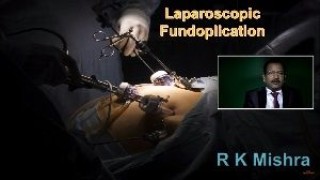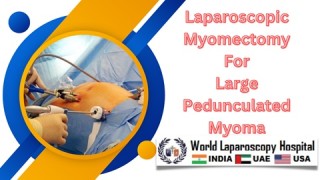Laparoscopic Supracervical Hysterectomy
Add to
Share
164 views
Report
1 month ago
Description
Laparoscopic Supracervical Hysterectomy (LSH) is a minimally invasive surgical procedure in which the uterus is removed while leaving the cervix intact. Unlike total hysterectomy, which removes both the uterus and cervix, LSH focuses on preserving the cervical structure, which can have advantages in certain patients. This surgery is usually performed using small abdominal incisions, a laparoscope, and specialized surgical instruments, leading to quicker recovery and reduced postoperative complications. Indications LSH may be recommended for women experiencing: Symptomatic uterine fibroids Abnormal uterine bleeding not responding to medical therapy Adenomyosis or benign uterine conditions Endometrial hyperplasia without cancer Chronic pelvic pain associated with uterine pathology It is generally not suitable for patients with cervical dysplasia, cervical cancer, or endometrial cancer, as the cervix is preserved. Procedure Overview Anesthesia: The surgery is performed under general anesthesia. Port Placement: Small incisions (usually 3–5) are made in the abdomen to insert the laparoscope and surgical instruments. Uterine Removal: The uterus is detached from the ligaments and blood supply while preserving the cervix. Morcellation (if needed): The uterus is sometimes divided into smaller pieces for removal through the small incisions. Closure: Surgical instruments are removed, and incisions are closed with sutures or surgical glue. Advantages of Laparoscopic Supracervical Hysterectomy Minimally invasive: Smaller incisions lead to reduced pain and scarring. Faster recovery: Patients typically resume daily activities within 1–2 weeks. Reduced blood loss compared to open hysterectomy. Preservation of cervix: Can help maintain pelvic floor support and potentially improve sexual function. Lower risk of urinary incontinence compared to total hysterectomy in some studies. Risks and Considerations While LSH is generally safe, potential risks include: Bleeding or infection Injury to bladder, bowel, or blood vessels Rare complications related to anesthesia Continued cyclic bleeding from the cervical stump in some patients Possibility of cervical disease later; routine cervical screening (Pap smear) remains necessary Recovery Hospital stay is usually 1 day, with some patients discharged the same day. Mild abdominal discomfort is expected for the first few days. Full recovery typically occurs within 2–4 weeks, depending on individual health and job demands. Patients are advised to avoid heavy lifting and sexual activity until cleared by the surgeon. Conclusion Laparoscopic Supracervical Hysterectomy is a safe, effective, and minimally invasive option for women requiring hysterectomy for benign uterine conditions while wishing to preserve the cervix. With the expertise of skilled laparoscopic surgeons, this procedure offers a faster recovery, less pain, and excellent outcomes.
Similar Videos






